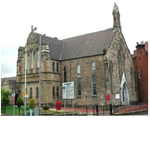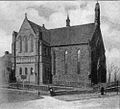
Paisley is a large town situated in the west central Lowlands of Scotland. Located north of the Gleniffer Braes, the town borders the city of Glasgow to the east, and straddles the banks of the White Cart Water, a tributary of the River Clyde.
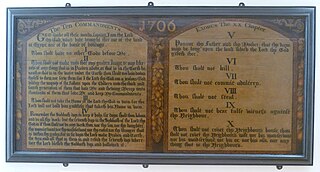
Kirk is a Scottish and former Northern English word meaning "church". It is often used specifically of the Church of Scotland. Many place names and personal names are also derived from it.
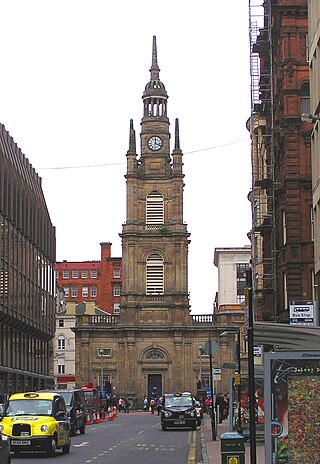
The St George's Tron Church, in Glasgow, Scotland, is a Church of Scotland church in the city centre, located in Nelson Mandela Place, previously known as St George's Place, fronting Buchanan Street at West George Street, along from Queen Street Station. It should not be confused with the 17th-century Tron Church, which lies to the south-west on Trongate and was redeveloped in the 1980s as the Tron Theatre. Located right on the busiest shopping street in Scotland, the building is a significant presence, and the oldest in the area. It stands as a terminating vista for West George Street.

Alexander Moody Stuart was a minister of the Free Church of Scotland. He served as Moderator of the General Assembly to the Free Church of Scotland in 1875.

The Kirk of the Canongate, or Canongate Kirk, serves the Parish of Canongate in Edinburgh's Old Town, in Scotland. It is a congregation of the Church of Scotland. The parish includes the Palace of Holyroodhouse and the Scottish Parliament. It is also the parish church of Edinburgh Castle, even though the castle is detached from the rest of the parish. The wedding of Zara Phillips, the Queen's granddaughter, and former England rugby captain Mike Tindall took place at the church on 30 July 2011. The late Queen Elizabeth II used to attend services in the church on some of her frequent visits to Edinburgh.

The General Assembly of the Church of Scotland is the sovereign and highest court of the Church of Scotland, and is thus the Church's governing body. It generally meets each year and is chaired by a Moderator elected at the start of the Assembly.

St. Ninians is a long-standing settlement which is now a district of the city of Stirling in central Scotland. It is located approximately one mile south of the city centre. It was originally known as Eccles, and may have been a Christian site from an unusually early date. Later called 'St. Ringan's'. This church was the administrative centre for churches across the strath of the River Forth.

Hope Park Church in St Andrews, Fife, is a congregation of the Church of Scotland.

Kelvinside Hillhead Parish Church, originally Hillhead Parish Church, is a parish church of the Church of Scotland, serving the Hillhead and Kelvinside areas of Glasgow, Scotland. It is within the Church of Scotland's Presbytery of Glasgow.
The Presbytery of Glasgow is one of the 46 Presbyteries of the Church of Scotland. It dates back to the earliest periods of Presbyterian church government in the Church of Scotland in the late 16th century. The Presbytery of Glasgow currently has 125 congregations, making it by far the largest Presbytery in the Church of Scotland.
John Cairns Christie is a minister of the Church of Scotland. He was Moderator of the General Assembly of the Church of Scotland for 2010-2011.

St Andrew's Orthodox Church is an Orthodox church located in the Southside, Edinburgh, Scotland. Edinburgh’s Orthodox community was founded in 1948 and has, since 2013, occupied the former Buccleuch Parish Church, which was founded as a chapel of ease of St Cuthbert's in 1756 and closed in 1969.

David Johnstone (1734–1824) was a Church of Scotland minister who served almost 60 years as minister of North Leith Parish Church. He was Chaplain in Ordinary to King George IV in Scotland.
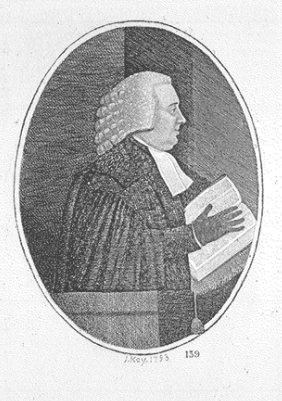
Robert Walker (1716–1783) was a Church of Scotland minister and historian who served as Moderator of the General Assembly in 1771. His views were strongly Calvinistic.

West St Giles' Parish Church was a parish church of the Church of Scotland and a burgh church of Edinburgh, Scotland. Occupying the Haddo's Hole division of St Giles' from 1699, the church was then based in Marchmont between 1883 and its closure in 1972.
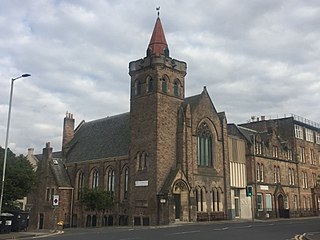
The Greyfriars Charteris Centre is a community centre in the Southside, Edinburgh, Scotland, part of the mission of Greyfriars Kirk. The centre opened in 2016 and occupies the 20th century church buildings which became Kirk o' Field Parish Church in 1969.
David Stewart Wylie (1771–1856) was a Scottish minister, from around 1800 leading a Baptist congregation in Liverpool.
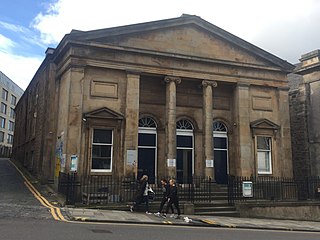
St Oran's Church was a Gaelic-speaking congregation of the Church of Scotland in Edinburgh. Originating in the early 18th-century, the congregation continued until 1948, latterly meeting at Broughton Street.
